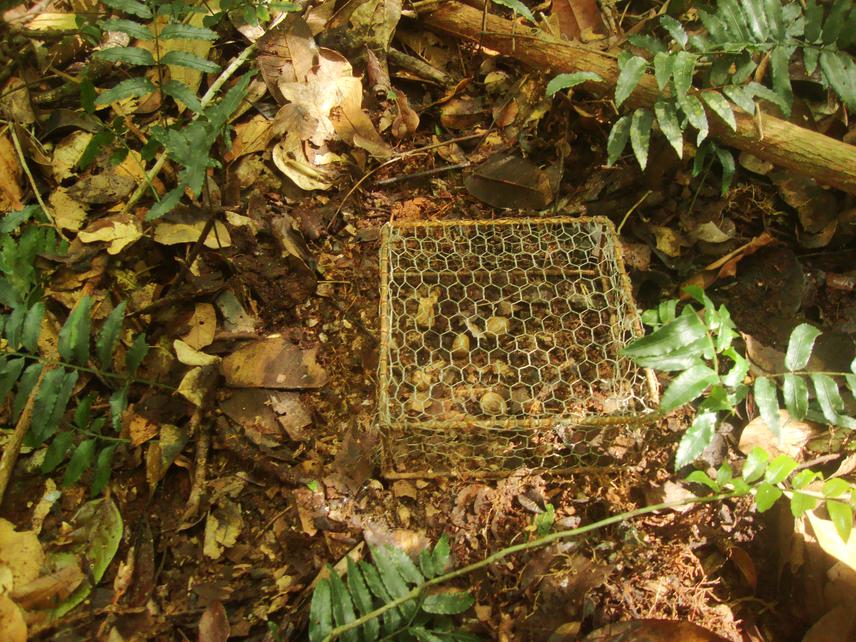Elaine Rios
This project aims to understand the effects of anthropogenic disturbances such as deforestation and hunting on midsized and large-bodied mammals, and its consequences for seed predation and dispersal in contrasted deforested landscapes within the Brazilian Atlantic forest. For this purpose, we propose (1) to identify midsized and large-bodied mammals species in forest remnants with different levels of disturbance in the southern region of Bahia; (2) determine how forest cover loss at the landscape scale affects diversity patterns (e.g., richness, composition, and abundance) of mammals; (3) evaluate how the seed dispersal and predation are affected by forest loss and defaunation; (4) assess the hunting pressure at each forest site through an index that will be related to community patterns.

Habitat loss and hunting are among the main causes of biodiversity loss worldwide, especially within hotspots of biodiversity as the Atlantic Forest. Within this hotspot, the region of Bahia is considered an area with a high conservation priority. As a combined result of high deforestation and pervasive, chronic disturbances several midsized and large-bodied mammals are being either locally extinct or suffering drastic population reductions.
Overall, there are many uncertainties about what species of midsized and large-body mammals still persist and which are the most threatened species in these remnants, particularly in private areas. Therefore, this project aims to fill this gap by surveying mammals in protected and private areas and especially identifying which factors are most related to species loss. In addition, this project will contribute with information on how dispersal and predation of seeds are affected by the absence of this group. For this, the study will be carried out in 23 forest sites of Atlantic Forest located in the southern region of the state of Bahia. Including four Conservation Areas: Una Biological Reserve and the National Parks of Monte Pascoal, Pau Brasil and Descobrimento that are fundamental refuges for the conservation of several species of midsized and large-mammals. For this, we will use camera traps (2-5 per site, for 30 consecutive days); seed removal experiments (5-11 stations per site) with two native species (Eschweilera ovata and Virola gardneri); and collect hunting data to build a defaunation index for each forest site as well as landscape data. The seed removal experiments will be composed of an open treatment, which will allow access to all groups of vertebrates and a closed treatment, excluding mammals (cages). We will classify seed fate into the following categories: predated by vertebrates or invertebrates; dispersed (including dispersal distance); infected with fungi; and germinated. The hunting index will be based direct and indirect evidence of hunting, distance from roads and houses to forest remnants, the percentage of forest in the landscape and from interviews with local residents around the study areas.
Finally, satellite imagery and geoprocessing software will be used to gather landscape-scale information. The percentage of forest cover will be calculated in different buffers. From this information, we will be able to propose mechanisms to recover or minimize the negative effects of such anthropogenic activities on midsized and large-bodied mammals, enhancing our understanding the future of forests in terms of their functioning and structure.